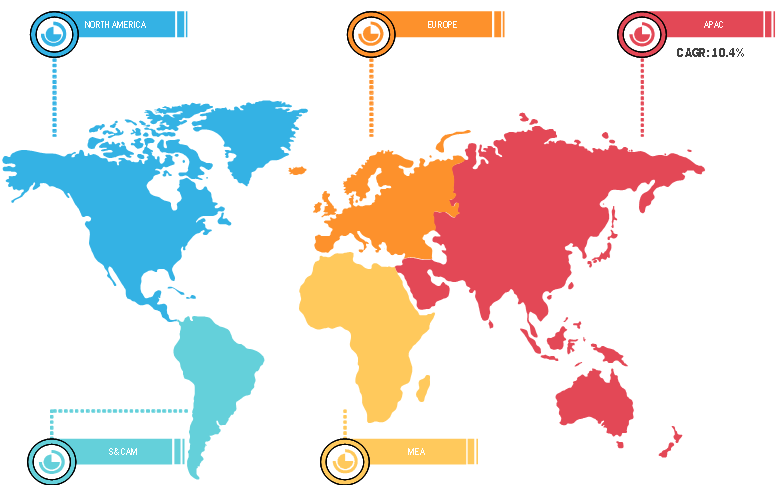Growing Demand for Natural Preservatives Fuels Growth of Protective Cultures Market
According to our latest market study on “Protective Cultures Market Forecast to 2028 – COVID-19 Impact and Global Analysis – by Target Microorganism (Bacteria, and Yeasts and Molds) and Application (Food Processing and Animal Feed),” the market was valued at US$ 180.21 million in 2021 and is projected to reach US$ 343.42 million by 2028; it is expected to grow at a CAGR of 9.6% from 2021 to 2028. The report highlights key factors driving the market and prominent players, along with their major developments, in the market.
Increasing demand for natural and preservative-free products and growing demand for perishable products with extended shelf life across the world drive the growth of the protective cultures market.
Consumer preference is shifting toward food and beverages with natural preservatives. Upsurge in the consumption of convenience and ready-to-eat food products propels the demand for foods with longer shelf life, which boosts the need for natural preservatives.
Protective cultures are considered a promising alternative in comparison to lactic acid bacteria. The use of protective culture ensures the safety and quality of minimally processed foods items without chemical preservatives. It also extends the shelf life of ready-to-eat products with fresh-tasting. The rising consumption of ready-to-eat food products coupled with the increasing consumption of healthy food, specifically with clean label ingredients, is the major factor projected to fuel the protective cultures market growth. In addition, the consumer preference toward clean-label products is surging, owing to the use of bacterial cultures. For instance, in 2017, DSM launched the Delvo Guard range of clean-label dairy cultures designed to inhibit mold and yeast in fresh dairy products without affecting food quality or safety. The company stated that these protective cultures are an addition to DSM’s clean-label range. It delivers an entirely clean-label and natural solution to image-conscious brands looking to contribute to a more sustainable world and rise to the challenge of changing consumer trends and preferences. Moreover, before consumption, health-conscious consumers understand the ingredients used in products through transparent product labeling. Thus, the demand for clean label products comprising natural preservatives is increasing. According to the Food & Health Survey 2016, over 70% of consumers check expiry dates in supermarkets and hypermarkets. This shows that, while consumers value clean labels and natural products, shelf life is also a key driver of purchasing behavior. In addition, recent research has exhibited that consumers are willing to pay more for clean label products, with 1 in 2 people ready to pay at least 10% more for these products, such as yogurt free from artificial preservatives. All such factors drive the demand for the natural preservatives across the world.
Biochem Srl, Bioprox, Chr. Hansen Holding A/S, Meat Cracks Technologie GmbH, DSM, Lallemand Inc, International Flavors & Fragrances Inc., Kerry Group, Sacco System, and Dalton Biotechnologies S.r.l are among the key players operating in the protective cultures market.
Global Protective Cultures Market Overview

Protective Cultures Market Growth Report and Size by 2028
Download Free Sample
Protective Cultures Market Forecast to 2028 - COVID-19 Impact and Global Analysis By Target Microorganism (Bacteria, and Yeasts and Molds) and Application (Food Processing and Animal Feed)
Protective Cultures Market Growth Report and Size by 2028
Download Free SampleProtective Cultures Market Forecast to 2028 - COVID-19 Impact and Global Analysis By Target Microorganism (Bacteria, and Yeasts and Molds) and Application (Food Processing and Animal Feed)
Impact of COVID-19 Pandemic on Protective Cultures Market
The ongoing COVID-19 pandemic has had a relatively positive impact on the protective cultures market. The pandemic helped to develop an interest and awareness related to the microbial cultures. The crisis has been a disagreeable and a stressful time for most of the population across the world. Therefore, the people across the world have started consuming clean label products. After the advent of the COVID-19 pandemic, people have become more cautious regarding food and are consuming healthier food than usual diet. The COVID-19 pandemic has changed the consumer’s perception of clean beyond labels or products. Consumers are demanding products that are clean label and natural, which is increasing the application of clean label in the various food applications. Moreover, the outlook for economic progress across most countries is optimistic for 2021.
Based on target microorganism, the global protective cultures market is bifurcated into bacteria, and yeasts and molds. Based on application, the market is bifurcated into food processing and animal feed. The market for the food processing segment is further segmented into dairy products; beverages; meat, poultry, & seafood products; and others. Based on geography, the protective cultures market is segmented into North America, Europe, Asia-Pacific, Middle East & Africa, and South and Central America. By country, the market in North America is subsegmented into the US, Canada, and Mexico. Similarly, by country, the market in Europe is subsegmented into Germany, France, Italy, the UK, Russia, and the Rest of Europe. The Asia-Pacific protective cultures market, by country, is further segmented into Australia, China, India, Japan, South Korea, and the Rest of APAC. The market in the Middle East & Africa, by country, is subsegmented into South Africa, Saudi Arabia, the UAE, and the Rest of MEA. Based on country, the protective cultures market in South and Central America is further segmented into Brazil, Argentina, and the Rest of South and Central America.
Contact Us
Phone: +1-646-491-9876
Email Id: sales@theinsightpartners.com